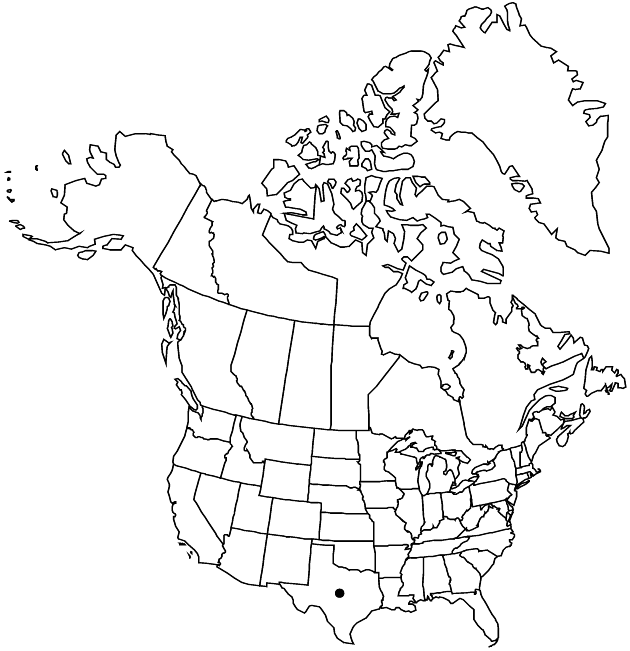Difference between revisions of "Crepis zacintha"
Univ. Calif. Publ. Bot. 19: 404. 1941.
FNA>Volume Importer |
imported>Volume Importer |
||
| Line 8: | Line 8: | ||
}} | }} | ||
|common_names=Striped hawksbeard | |common_names=Striped hawksbeard | ||
| + | |special_status={{Treatment/ID/Special_status | ||
| + | |code=I | ||
| + | |label=Introduced | ||
| + | }} | ||
|basionyms={{Treatment/ID/Basionym | |basionyms={{Treatment/ID/Basionym | ||
|name=Lapsana zacintha | |name=Lapsana zacintha | ||
| Line 38: | Line 42: | ||
|elevation=200–300 m | |elevation=200–300 m | ||
|distribution=Tex.;Europe. | |distribution=Tex.;Europe. | ||
| + | |introduced=true | ||
|discussion=<p><i>Crepis zacintha</i> is recognized by its annual habit, lyrate-pinnatifid leaves mostly in rosettes, cymiform-dichotomous branching, single heads in axils of branches, indurate and bent phyllaries, and dimorphic, angular cypselae. Because of its unique morphology, it sometimes has been assigned to a separate, monotypic genus (Zacintha Miller).</p> | |discussion=<p><i>Crepis zacintha</i> is recognized by its annual habit, lyrate-pinnatifid leaves mostly in rosettes, cymiform-dichotomous branching, single heads in axils of branches, indurate and bent phyllaries, and dimorphic, angular cypselae. Because of its unique morphology, it sometimes has been assigned to a separate, monotypic genus (Zacintha Miller).</p> | ||
|tables= | |tables= | ||
| Line 61: | Line 66: | ||
|publication title=Univ. Calif. Publ. Bot. | |publication title=Univ. Calif. Publ. Bot. | ||
|publication year=1941 | |publication year=1941 | ||
| − | |special status= | + | |special status=Introduced |
| − | |source xml=https:// | + | |source xml=https://bibilujan@bitbucket.org/aafc-mbb/fna-data-curation.git/src/bb6b7e3a7de7d3b7888a1ad48c7fd8f5c722d8d6/coarse_grained_fna_xml/V19-20-21/V19_316.xml |
|tribe=Asteraceae tribe Cichorieae | |tribe=Asteraceae tribe Cichorieae | ||
|genus=Crepis | |genus=Crepis | ||
Revision as of 21:36, 27 May 2020
Annuals, 20–30 cm (taproots shallow). Stems 1–3, erect, simple or dichotomously branched proximally or distally, hispid proximally, glabrous distally. Leaves basal and cauline; petiolate; blades lyrate,10–20 × 3–4 cm, pinnately lobed (lateral lobes remote, triangular, terminal lobes relatively large, ovate or truncate), apices obtuse, faces hispid (hairs pale, relatively short). Heads borne singly (sessile in axils of branches). Calyculi of 5, lanceolate, glabrous or proximally tomentulose bractlets 3–6 mm. Involucres cylindric, 5–7 × 3–7 mm. Phyllaries 10, lanceolate (proximal 1/2 of each becoming indurate, swollen and angular in fruit, enclosing and partially fused to cypsela, margins green), apices bent at right angles (ciliate), abaxial faces basally tomentulose, adaxial glabrous. Florets ca. 30; corollas yellow, deep purplish red abaxially, 7 mm. Cypselae (dimorphic) yellowish, ribs 10 (smooth), outer strongly compressed and triangular, obconic, 2–2.5 mm, strongly constricted proximally, apices truncate, inner obconic, ca. 2.5 mm, tapered proximally, apices constricted; pappi white (fine, soft), 1.5 mm. 2n = 6.
Phenology: Flowering Jun–Jul.
Habitat: Grassy slopes, fields, gravelly waste areas, roadsides
Elevation: 200–300 m
Distribution

Introduced; Tex., Europe.
Discussion
Crepis zacintha is recognized by its annual habit, lyrate-pinnatifid leaves mostly in rosettes, cymiform-dichotomous branching, single heads in axils of branches, indurate and bent phyllaries, and dimorphic, angular cypselae. Because of its unique morphology, it sometimes has been assigned to a separate, monotypic genus (Zacintha Miller).
Selected References
None.